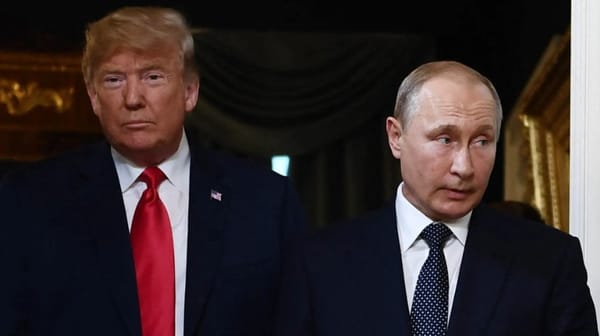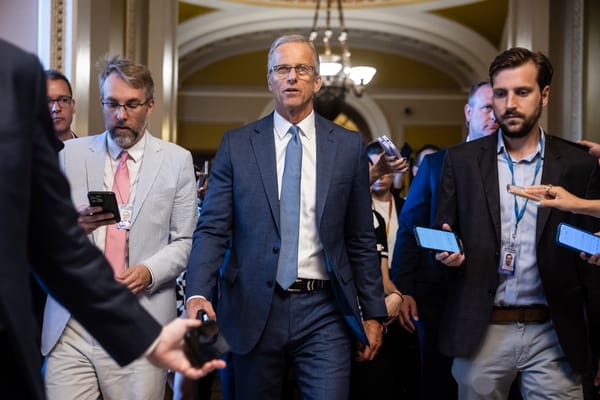Europe’s Strategic Pivot: Building Partnerships in Central Asia Amid U.S. Tariffs

On April 4, 2025, the European Union concluded its inaugural summit with the five Central Asian nations—Kazakhstan, Kyrgyzstan, Tajikistan, Turkmenistan, and Uzbekistan—in Samarkand, Uzbekistan. This historic meeting marked a new chapter in EU-Central Asia relations as Brussels seeks to secure critical raw materials essential for its green and digital transitions while countering growing geopolitical pressures from China and Russia. The summit also coincided with U.S. President Donald Trump’s announcement of sweeping 20% tariffs on EU goods, adding urgency to Europe’s efforts to diversify supply chains and strengthen economic ties with new partners.
The EU-Central Asia Summit: A Strategic Partnership
Key Announcements
- Strategic Partnership Agreement: European Commission President Ursula von der Leyen unveiled a new strategic partnership with Central Asia, emphasizing mutual benefits in trade, infrastructure development, and resource extraction.
- €12 Billion Investment Package: The EU pledged €12 billion under its Global Gateway initiative to fund projects across four key areas:
- Critical Raw Materials: €2.5 billion allocated to enhance extraction and processing capabilities for lithium, rare earths, and other essential minerals.
- Trans-Caspian Transport Route: €3 billion invested in developing the Middle Corridor to reduce overland travel time between Europe and Central Asia to 15 days.
- Environmental Projects: €6.4 billion dedicated to climate resilience initiatives, including green belts in the Aral Sea basin.
- Digital Connectivity: €100 million for expanding internet access to remote areas in Central Asia.
The Samarkand Declaration
The summit concluded with the signing of the Samarkand Declaration, formalizing the strategic partnership and outlining shared goals in connectivity, environmental sustainability, and security cooperation.
Central Asia’s Role in Europe’s Critical Raw Materials Strategy
Resource Wealth
Central Asia is home to vast reserves of critical raw materials vital for Europe’s green and digital transitions:
- Lithium: Kazakhstan and Uzbekistan have significant lithium deposits that could support Europe’s EV battery industry.
- Rare Earths: Kyrgyzstan and Tajikistan possess substantial rare earth elements needed for advanced technologies.
- Uranium: Turkmenistan is a key supplier for Europe’s nuclear energy sector.
Diversification Goals
The EU aims to reduce its dependence on China, which controls 60% of global production and 85% of processing for critical minerals. In 2023, 94% of EU imports of rare earths came from China, Malaysia, and Russia combined. By partnering with Central Asia, Europe seeks to diversify supply chains while promoting sustainable mining practices.
Geopolitical Context
U.S.-EU Trade Tensions
President Trump’s announcement of 20% tariffs on EU goods has exacerbated transatlantic trade tensions. European leaders have described the tariffs as a “major blow” to the global economy and are preparing countermeasures targeting U.S. exports worth €26 billion.
China’s Influence
China has long dominated Central Asia through its Belt and Road Initiative (BRI), investing billions in infrastructure projects such as railways and pipelines. Beijing remains a formidable competitor for Europe as it seeks to expand its footprint in the region.
Russia’s Legacy
Despite its waning influence due to sanctions over the Ukraine war, Russia retains deep historical ties with Central Asia through trade and cultural connections. Moscow has also used the region as a base to circumvent Western sanctions.
EU’s Strategic Approach
Global Gateway Initiative
The EU’s Global Gateway program is positioned as a values-based alternative to China’s BRI:
- Focuses on transparency, good governance, and local benefits.
- Mobilizes €300 billion globally by 2027 for infrastructure investment.
Sustainable Development
Von der Leyen emphasized Europe’s commitment to sustainable practices during her address at the summit:
“This is the European way. We bring investment, transparency, and good governance. We bring local benefits and long-term partnerships.”
Challenges Ahead
Infrastructure Needs
Central Asian governments require €18.5 billion to develop infrastructure necessary for resource extraction and transport. While the EU has raised more than half this amount through public-private partnerships, gaps remain.
Competition from China
China’s head start in Central Asia poses a significant challenge for Europe:
- Beijing has already established extensive mining operations in Kazakhstan and Kyrgyzstan.
- Chinese firms dominate logistics networks across the region.
Russia’s Sanctions Evasion
EU officials have warned Central Asian countries against enabling Russian companies to bypass Western sanctions. Ensuring compliance will be critical for maintaining trust between Brussels and regional governments.
Opportunities for Collaboration
Economic Integration
By investing in regional connectivity projects like the Trans-Caspian Transport Route, Europe can strengthen trade links while reducing reliance on maritime routes dominated by China.
Local Value Chains
The EU aims to build local value chains for critical minerals by partnering with Central Asian companies. This approach could create jobs and foster economic growth within the region.
Environmental Leadership
Europe’s emphasis on sustainable mining practices aligns with global efforts to combat climate change. Initiatives like reforestation projects in the Aral Sea basin demonstrate a commitment to ecological restoration.
Conclusion
The EU-Central Asia Summit represents a pivotal moment in Europe’s quest to secure critical raw materials while navigating complex geopolitical dynamics. By forging strategic partnerships with resource-rich nations like Kazakhstan and Uzbekistan, Brussels is taking decisive steps toward reducing dependence on China and strengthening its position as a global leader in sustainable development.
However, challenges remain—from infrastructure gaps to competition with Beijing—and success will depend on Europe’s ability to deliver tangible benefits while maintaining trust among its partners. As transatlantic trade tensions escalate under Trump’s tariff policies, diversifying supply chains through Central Asia offers both an economic lifeline and a strategic advantage for Europe in an increasingly multipolar world.




